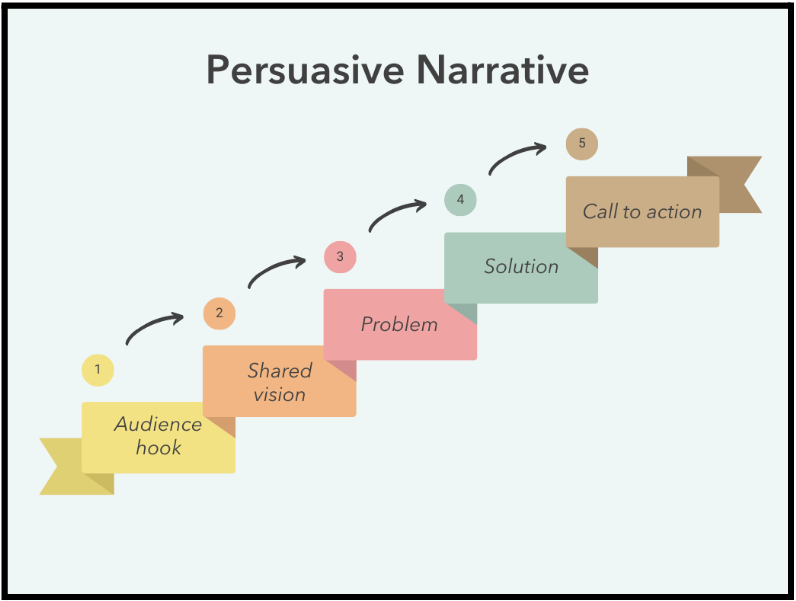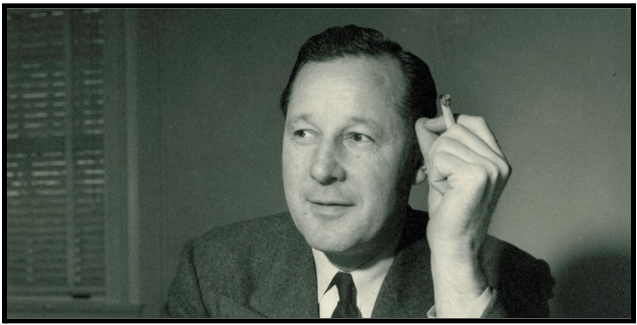Win your audience over using a Persuasive Narrative framework
Talking Next-Gen Energy
Humans developed complex societies in part because we developed complex narratives. We gathered around fires, told stories, and built frameworks for understanding the world.
Narrative frameworks help us make sense of the world around us. Gods that control the weather, scientific laws that explain our physical world, and tribal politics are all examples of frameworks we use.
Such frameworks help us organize our thoughts and effectively communicate with others.
When you want to unite people to your cause, using a framework to explain your ideas will help your listeners connect with you.
The following template is one approach you can use. It provides a persuasive framework that will help you explain your ideas in a way that will win others over. You can use this template whether you have 30 seconds to talk, 30 minutes, or more.
Start with an audience-focused opening
Begin with an engaging opening that puts your audience at center stage. This establishes common ground and frames your talk or conversation. (Pro-tip: know who your audience is before creating a tailored opening.)
Your opening might be a single sentence or 5 minutes. Either way, tailor your first moments with your audience. Make your opening about them, not yourself. Use pronouns like “you” and “we” rather than “me.”
For example, imagine you are trying to convince a group of conservative policymakers to reform regulations to make it easier to build energy infrastructure like nuclear reactors or geothermal power plants.
You can…
- Ask a question: “How many of you entered public service to cut through red tape and unleash the potential of American innovation?”
- Make a bold claim: “You can revolutionize our energy sector within this decade.”
- Pose a scenario for consideration: “Imagine a world where your grandchildren aren’t dependent on fossil fuels coming from not-so-friendly countries.”
Create a positive emotion for your audience. Make them feel important, validated, or motivated.
Don’t make poor assumptions or imply something negative. For example, avoid: “You probably don’t realize the opportunities in the energy sector.”
Even if your statement is true, insulting your audience won’t get you far.

Once you start to look, you’ll see speakers using audience-focused openings everywhere. From news programs to podcasts. Notice how they make you feel engaged and primed to listen to what comes next.
Paint a shared vision
After you’ve captured your audience’s attention with an engaging opening, hold it by painting a picture of what there is to gain by joining your cause.
What’s the vision of a better world we could achieve if we implemented your solution (which you’ll get to in a moment)?
Why should the audience care about what you have to say? What do they have to lose if they don’t follow you? What’s at stake here?
This vision is something your audience agrees with. It’s a better future for everyone. It’s what can happen if your listeners join forces with you.
Imagine a United States that’s not just energy independent but an energy exporter. A nation where our kids grow up in towns revitalized by high-paying jobs in the energy sector. A place where we lead the world in next-generation energy technology, setting the global standards for efficiency and land use, leaving a legacy that our grandchildren will thank us for.
Your goal in this part is to hold your audience’s attention. Make them eager to learn how we get to this better world.
Tactic: Clarify your vision by asking yourself: how will the world be different when my idea is successful? In what vivid ways will life be better for my listeners?
This is the picture you want to paint. Make sure it’s something your audience will also find compelling. My dog, Ollie, finds a dead fish extremely compelling. I do not.
Clarify the Problem
You’ve captured your listeners’ attention and held it by telling them why they should care. Now shine the spotlight on what threatens that shared vision. The problem.
Why don’t we already have the better future you just painted? What’s holding us back? What is threatening the vision that we all agree on?
Your problem is the specific reason that something needs to change. Outline the consequences for your audience and make it clear why they need to act.
Red tape and outdated regulations stifle innovation and make it difficult for the private sector to invest in next-gen energy solutions like nuclear reactors and geothermal drilling. Our cumbersome approval processes drag us behind other nations and endanger our leadership in energy technology. Despite having the technology and resources, the bottleneck is outdated regulations that deter private investments in next-gen energy projects like nuclear and geothermal.
Construct a problem that your audience agrees is a problem. A problem that is obvious to you might not strike your audience as being a big deal.
To know how much explanation your problem needs, consider whether it is chronic, acute, or latent:
- A chronic problem is ongoing but not urgent, like needing to lose weight. Clarify the importance of solving this problem now.
- An acute problem is specific and obvious, like a bridge collapse. Your audience won’t need much education or convincing. They’ll want the solution.
- A latent problem is something people might not be aware of. AI risk and regulation were latent until ChatGPT burst into the limelight. Most people weren’t aware of the issue until something specific made it feel acute.
Tactic: Use pauses around your problem to draw attention to it and ensure your listeners really understand what the problem is. Don’t gloss over it.
Present your solution
You now have your audience’s attention, care, and concern. Until this point, your focus has been on laying common ground and inspiring your listeners. Now, it’s time to present what you want your listeners to do or agree with. This is what you’re trying to persuade others of.
What is it that you want your listeners to believe? How can we solve the problem you presented to protect or secure our shared vision?
We must simplify and accelerate the regulatory approval processes for next-gen energy technologies. These technologies can provide clean, efficient, and abundant energy for all Americans. By updating our regulatory framework, we can unleash private-sector investment and innovation, ensuring our nation leads in 21st-century energy solutions.
Make your solution clear and tied to the problem. Avoid any disconnect between problem and solution that would pull your audience out of the framework you’ve laid out.
Tactic: state your solution in positive terms. Say what you do want to happen, not what you want to stop.
Telling your audience to “end the use of fossil fuels” doesn’t give them anything to do. It’s a non-starter. Telling them to “transition to a clean, abundant energy regime” gives them something to act on, even if it’s non-specific.
Call your audience to action
Close your remarks with a clear call to action and specific next steps. What tangible action should your listeners take?
Weave themes from your opening back in. You can even write your opening and closing together after you’ve constructed the vision, problem, and solution.
Think of your closing as the start of an open road. This isn’t the end of the story. The hero is only starting out. The dragon is yet to be slayed.
Talk to your energy advisors today and demand an immediate review of our energy regulations. Let’s clear the way for private sector investment in next-gen energy infrastructure—our future depends on it.
The closing frames the conversation that you want to have next. Make it clear to your audience what is needed to implement your solution and achieve the vision we all want.

When you combine these pieces, you have a connective, well-articulated case that you can share in under 2 minutes.
You can revolutionize our energy sector within this decade.
Imagine a United States that’s not just energy independent but an energy exporter.
A nation where our kids grow up in towns revitalized by high-paying jobs in the energy sector. A place where we lead the world in next-generation energy technology, setting the global standards for efficiency and land use, leaving a legacy that our grandchildren will thank us for.
But red tape and outdated regulations stifle innovation and make it difficult for the private sector to invest in next-gen energy solutions like nuclear reactors and geothermal drilling.
Our cumbersome approval processes drag us behind other nations and endanger our leadership in energy technology. Despite having the technology and resources, the bottleneck is outdated regulations that deter private investments in next-gen energy projects like nuclear and geothermal.
We must simplify and accelerate the regulatory approval processes for next-gen energy technologies. These technologies can provide clean, efficient, and abundant energy for all Americans.
By updating our regulatory framework, we can unleash private-sector investment and innovation, ensuring our nation leads in 21st-century energy solutions.
Talk to your energy advisors today and demand an immediate review of our energy regulations. Let’s clear the way for private sector investment in next-gen energy infrastructure—our future depends on it.
***
What’s an idea that you want to persuade someone of? Sketch out a persuasive argument following this structure.
Think of how you could start by connecting to a specific audience. What’s a vision that you all share? Articulate what threatens that vision followed by your solution. End with a clear call to action.
We all use frameworks to understand the world around us. Provide your audience with the framework that leads to your solution.




